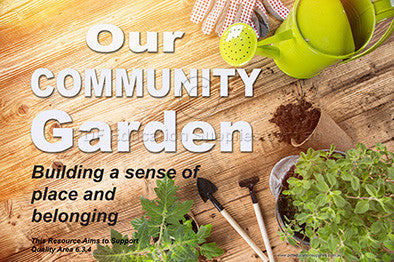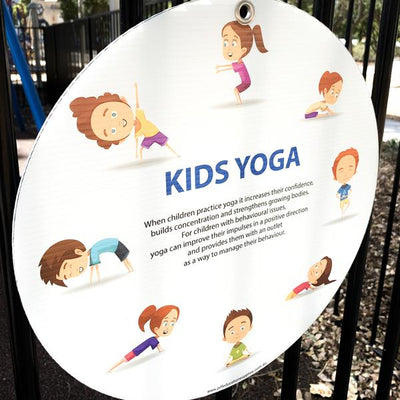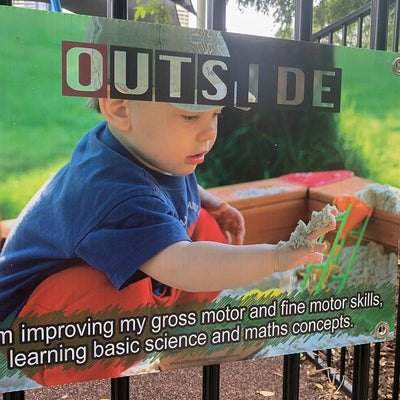Importance of displaying Flags
Aboriginal and Torres Strait Islander peoples have experienced a long history of exclusion from Australian history books, the Australian flag, the Australian anthem and for many years, Australian democracy. This history of dispossession and colonisation lies at the heart of the disparity between Aboriginal and Torres Strait Islander and other Australians today. “[Acknowledgement of Country] says to the world, and more importantly to ourselves, that we accept the fact we are in a place that has a history and story far beyond 220 years. It says to our Aboriginal and Torres Strait Islander fellow Australians that we are all in the future journey of our country together.” — Richard Wynne, Minister for Aboriginal Affairs, Victoria EYLF Outcome 4.3: Children are confident and involved learners when they transfer and adapt what they have learned from one context to another, for example, when they make connections between experiences, concepts and processes. ...
-
Sep 23, 2024
Benefits of Indigenous Artwork for Children
Exposing children to Aboriginal artwork offers numerous benefits. It fosters appreciation for diverse cultures, promotes creativity and imagination, encourages respect for nature and the environment, and provides opportunities for learning about Indigenous history, stories, and traditions.
Additionally, it can enhance cognitive development, spatial awareness, and visual literacy skills.
Overall, it contributes to a more inclusive and culturally rich educational environment for children.
PDF EDUCATION SUPPLIES are very lucky to work with such talented Indigenous artist to print their artwork so that you can display it in your outdoor areas or indoors
Visit our website to check out some of the AMAZING ART
-
Mar 13, 2024
SPECIFIC SINK PURPOSE
SINK PURPOSES STICKERS
Our vinyl sticker make it clear what the purpose of a particular sink is for. Water will run off these stickers and they will help keep you compliant as well as healthy.
#workplacehealthandsafety #sinkpurpose #complianceresources #PDFEDUCATIONSUPPLIES #handwashingsink #craftsink #foodpreparationsink #dishwashingsink #babybottlepreparation #mopsink #earlyyearseducation #qualityarea2 #mytimeourplaceresources
-
Sep 20, 2023
How do I attach Corflute signs?
Our range of metal outdoor signage will stand up to the elements. We use corflute as it is weatherproof and we print using UV ink to resist fading.
We suggest using zip-ties if attaching to a fence and drill for walls for a secure and long-lasting mounting solution.
-
Aug 11, 2023
Community Garden sign
Have you thought about establishing a Community Garden within your service? It is such a wonderful way to create a sense of belonging, children will love to offer the herbs/vegetables/flowers to Adults and it is perfect to invite parents/grandparents or members of the local community to share their knowledge with the children and educators alike. It really does build a great sense of Pride.
We have made a new Corflute outdoor sign to display in your outdoor garden, www.pdfeducationsupplies.com.au
-
Nov 16, 2022
Why children should Acknowledge Indigenous Australians
An Acknowledgement of Country is a way to show respect to the Traditional Owners of Australia. By saying a daily Acknowledgement of Country it encourages children to engage with diversity and show respect.
Our wooden sign is a wonderful addition to ALL Educational facilities.
-
Feb 11, 2022
Benefits of Yoga
Why we should all be practicing Yoga :-
* Promotes Self-esteem and Confidence
* Increase strength, flexibility and balance
* Improves focus and attention
* Cultivates respect for self and others
-
Oct 05, 2021
Benefits of Sandpit Play for Children
Sand help a child develop fine motor skills like those necessary to use a small shovel, pull a truck, and build a castle. By burying themselves in sand, and feeling their body position within the sand, children are using words to communicate their different body parts that they can feel or move under the sand. Sand play also helps children develop more complex social skills like sharing, and communicating with piers. A child does not need large numbers of toys in a sandpit as their imagination will be endless. Sand play is particularly beneficial for developing a sense of textures. Not only is sand a new and different texture for children to feel on their skin, but the contrast it creates with concrete, grass, dirt, and wood will emphasize the sensation of each surface. Sand Play Safety Tips A sand box should always be cover it when it’s not in use to...
-
Jul 05, 2021
Bonds between educator's and children
Home is definitely the first school for children and without doubt the most important it is very closely followed by the bond and trust that children build with their educators a child’s “secondary attachment figure”
It is important that parents and educators work together for the best outcome for a child. PDF Education Supplies have made this laminated poster to display to let parents who make not think it is not appropriate for them to “tread on educators toes” know that you really do want them to be involved Laminated poster from www.pdfeducationsupplies.com.au
#bonds #childcare
-
Oct 07, 2016
SENSORY GARDEN
A sensory garden stimulating the senses. This stimulation occurs courtesy of plants and the use of materials that engage one’s senses of sight, smell, touch, taste, and sound. These types of gardens are popular with and beneficial to both children and adults, especially those who have sensory processing issues, including autism and other disabilities. When planning a sensory garden, it is important to feature elements that appeal to all five senses. For visual stimulation, or sight, colour is an important consideration. Touch Chose plants that are durable enough to withstand frequent brushing or handling. Look for textures in soft flowers, fuzzy leaves, springy moss, rough bark, succulent leaves, prickly seed pods. Enjoy the textures of sage, rosemary, thyme, tarragon, both types of parsley, mint. Accessories can include rocks and sculptures in a variety of shapes, sizes and textures. Use sculpted handrails for safety and added textures. Smell Rosemary, sage, tarragon,...
-
Oct 05, 2016











